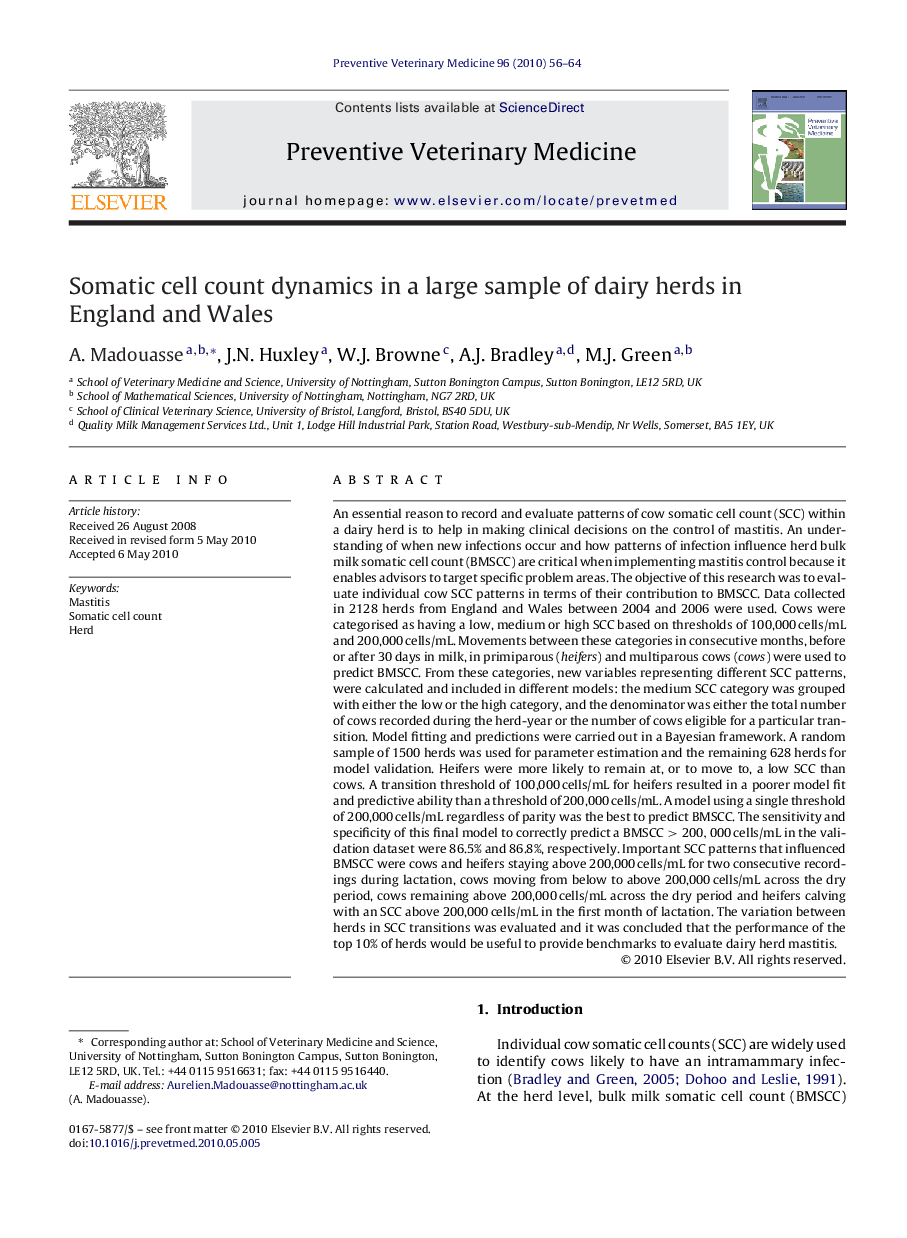| کد مقاله | کد نشریه | سال انتشار | مقاله انگلیسی | نسخه تمام متن |
|---|---|---|---|---|
| 2453124 | 1554200 | 2010 | 9 صفحه PDF | دانلود رایگان |

An essential reason to record and evaluate patterns of cow somatic cell count (SCC) within a dairy herd is to help in making clinical decisions on the control of mastitis. An understanding of when new infections occur and how patterns of infection influence herd bulk milk somatic cell count (BMSCC) are critical when implementing mastitis control because it enables advisors to target specific problem areas. The objective of this research was to evaluate individual cow SCC patterns in terms of their contribution to BMSCC. Data collected in 2128 herds from England and Wales between 2004 and 2006 were used. Cows were categorised as having a low, medium or high SCC based on thresholds of 100,000 cells/mL and 200,000 cells/mL. Movements between these categories in consecutive months, before or after 30 days in milk, in primiparous (heifers) and multiparous cows (cows) were used to predict BMSCC. From these categories, new variables representing different SCC patterns, were calculated and included in different models: the medium SCC category was grouped with either the low or the high category, and the denominator was either the total number of cows recorded during the herd-year or the number of cows eligible for a particular transition. Model fitting and predictions were carried out in a Bayesian framework. A random sample of 1500 herds was used for parameter estimation and the remaining 628 herds for model validation. Heifers were more likely to remain at, or to move to, a low SCC than cows. A transition threshold of 100,000 cells/mL for heifers resulted in a poorer model fit and predictive ability than a threshold of 200,000 cells/mL. A model using a single threshold of 200,000 cells/mL regardless of parity was the best to predict BMSCC. The sensitivity and specificity of this final model to correctly predict a BMSCC>200,000BMSCC>200,000 cells/mL in the validation dataset were 86.5% and 86.8%, respectively. Important SCC patterns that influenced BMSCC were cows and heifers staying above 200,000 cells/mL for two consecutive recordings during lactation, cows moving from below to above 200,000 cells/mL across the dry period, cows remaining above 200,000 cells/mL across the dry period and heifers calving with an SCC above 200,000 cells/mL in the first month of lactation. The variation between herds in SCC transitions was evaluated and it was concluded that the performance of the top 10% of herds would be useful to provide benchmarks to evaluate dairy herd mastitis.
Journal: Preventive Veterinary Medicine - Volume 96, Issues 1–2, 1 August 2010, Pages 56–64